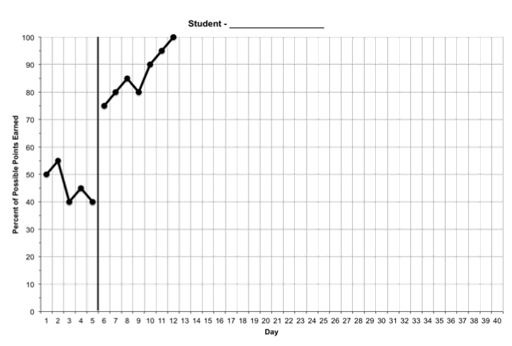Is What We’re Doing Working? Measuring Effectiveness of SEB Instruction and Interventions
Today, many districts are implementing Tier 1 social-emotional behavior (SEB) curricula and interventions to support student well-being and remove barriers to learning. However, it can be challenging to determine whether SEB instruction and interventions are having a positive impact for learners.
How can educators determine whether current practices to bolster SEB growth are working for their students and schools? Additionally, how can teams determine when—and how—to adjust SEB supports to make the most of instructional minutes and limited resources?
This article provides strategies for monitoring students’ growth and evaluating the effectiveness of SEB universal instruction and student interventions.
Supporting SEB Needs in a Multi-Tiered System of Support (MTSS)
Meant to support the whole child, a multi-tiered system of support (MTSS) recognizes the important link between academics and SEB functioning. Positive Behavioral Interventions and Supports (PBIS) and social-emotional learning (SEL) programs are two approaches widely used within MTSS to promote strong SEB skills. PBIS encourages expected behaviors, while SEL helps students build social-emotional competence.
Together, these approaches help students achieve positive SEB functioning, which is defined as:
- the presence of social and emotional skills (e.g., self-awareness, relationship skills, responsible decision-making), and
- the absence of problematic behaviors and emotions (e.g., defiance/noncompliance, withdrawal, anxiety; Suldo & Shaffer, 2008).
SEB supports should be incorporated into MTSS to ensure all students are able to succeed in learning. Just as with academics, the right assessments can be used to both identify where SEB supports are needed and whether SEB supports are effective.
Aligning Resources & Measuring Growth with Universal Screening
To support SEB within an MTSS, districts should regularly screen students using a screening tool designed to identify social, academic, and emotional behavior risk.
This enables educators to:
- Guide Tier 1 programming and resourcing
- Deliver effective Tier 1 interventions proactively
- Identify students who are at risk and in need of additional support
Measuring effectiveness and impact is an ongoing process. Just as universal screening is used to guide initial SEB efforts, it can also be used to determine effectiveness of those efforts. The process is ongoing: screening helps continually identify the needs of students so that resources and professional development can be shifted to meet the needs of all students.
Monitoring Intervention Progress and Effectiveness
To determine if SEB interventions are working, educators should use an SEB assessment tool that’s specifically designed for progress monitoring.
We suggest using a Direct Behavior Rating (DBR) progress monitoring tool—such as the one provided in FastBridge. With DBRs, educators can detect students’ growth and determine if supports need to be adjusted.
How to Use a DBR
- Identify the student(s) of interest
- Select behavior(s) of interest (relevant domains, default behaviors etc.)
- Identify rating period (class, time, day of the week, starting week/point/goal)
- Observe student behavior
- Rate student behavior (frequency and intensity etc.)
- Collect multiple data points (e.g., baseline and intervention)
- Interpret data
Use Progress Monitoring Data to Drive Decisions
After implementing an SEB intervention, the nature of change can vary from student to student. Certain behaviors, like engagement, can change rapidly. Others, like social skills, usually develop more gradually.
Analyzing progress monitoring data via visual analysis can help educators assess intervention efficacy, make adjustments and drive decisions. Here are a few questions to help guide the process:
- What’s the level of the data? Look at the mean or median value.
- What’s the trend? Is student behavior improving?
- Is there variability or consistency in the data? The goal is consistency.

Enabling Proactive, Tailored Student Support
Districts—especially those investing in SEL programs—can ensure maximum impact and efficacy with SEB screening and progress monitoring to help guide programming, intervention strategies, and professional development needs.
For additional insights, watch my recent webinar with Dr. Nate von der Embse on demand: Data-Driven SEB Intervention: How to Monitor Progress and Evaluate Effectiveness
*****
Illuminate Education equips educators to take a data-driven approach to serving the whole child. Our solution combines comprehensive assessment, MTSS management and collaboration, and real-time dashboard tools, and puts them in the hands of educators. As a result, educators can monitor learning and growth, identify academic and social-emotional behavioral needs, and align targeted supports in order to accelerate learning for each student.
Ready to discover your one-stop shop for your district’s educational needs? Let’s talk.

